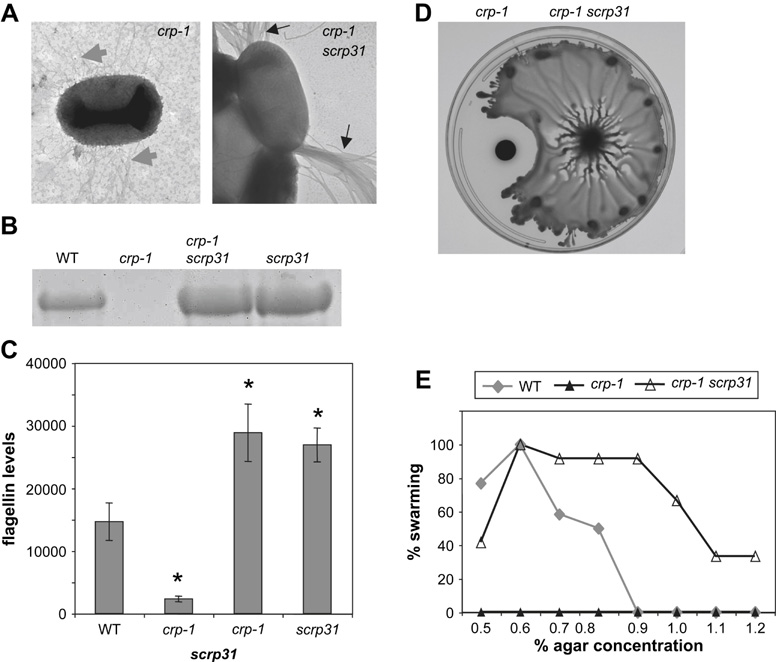Fig. 4.
The scrp31 mutation restores flagellum production to a crp mutant strain. A. TEM micrographs of a crp-1 mutant with no flagellum, but numerous fimbriae (gray arrows) and crp scrp31 double mutant cells covered with numerous flagella (black arrows). The size bar represents 500 and 100 nm respectively. B. PAGE analysis of surface protein fractions from wild-type culture, crp, crp scrp31 and scrp31 cultures showing flagellin production. C. Quantitation of flagellin levels using Image J analysis software. Surface fractions were taken from stationary phase cultures. Asterisks represent a statistically significant difference from the wild-type (p<0.01). D. Swarming motility on LB with 0.7% agar at 48 h. The crp mutant swarming defect is rescued by the scrp31 mutation. E. Plotting the percentage of positive swarming motility experiments at 48 h as a function of agar concentration shows that the scrp31 mutation confers a hyperswarming phenotype (n≥12 plates for WT and crp-1 scrp31 and n≥8 for the crp-1 mutant, performed on 4 separate occasions with similar results).

